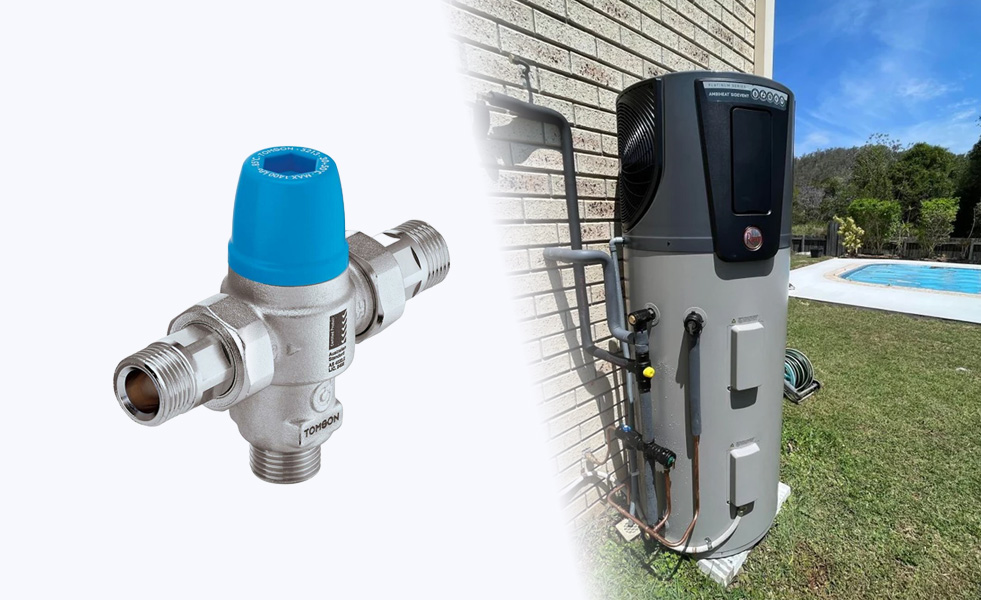

Hot Water Tempering Valves: What Are They and What Do They Do?
Hot water tempering valves are essential to home plumbing, safety, and efficiency. For anyone with hot water systems, understanding how tempering valves work and why they are critical can make a significant difference in maintaining a safe and efficient household. In this blog, we’ll dive into what hot water tempering valves are, how they function, and why they are an indispensable part of modern hot water systems.
What is a Hot Water Tempering Valve?
Hot water tempering valves are safety devices installed in hot water systems. It blends hot water from your heater with cold water to achieve a safe, consistent water temperature. This mixed water is then delivered to your taps and showers. This ensures you don’t get scalded by boiling water or frozen by cold water.
Tempering valves are often mistaken for thermostatic mixing valves, but they serve a distinct purpose. While both devices mix hot and cold water, tempering valves provide a consistent outlet temperature. They are usually set to deliver water at around 50°C, considered safe for domestic use.
How Do Hot Water Tempering Valves Work?
Hot water tempering valves are engineered with an internal mechanism that automatically adjusts the hot and cold water proportion to achieve the desired temperature. Here’s a simplified breakdown of the process:
- Hot and Cold Water Inlets: The valve has separate inlets for hot water from the heater and cold water from the main supply.
- Mixing Mechanism: Inside the valve, a thermostat detects the temperature of the mixed water. If the water is too hot, the valve allows more cold water to mix in; if it’s too cold, it will allow more hot water to flow through.
- Consistent Output: The result is a consistent flow of water at the set temperature, usually between 45°C and 50°C, which prevents scalding and reduces the risk of burns, especially for children and the elderly.

Why Are Tempering Valves Significant in Hot Water Systems?
- Safety: Tempering valves’ primary function is safety. Water heaters typically store water at temperatures between 60°C and 75°C to kill harmful bacteria such as Legionella. However, these temperatures are too hot for direct use and can cause severe burns within seconds. A tempering valve ensures safe water temperature at the tap, preventing accidents.
- Regulatory Compliance: In many regions, including Australia, plumbing standards require tempering valves in residential hot water systems. This regulation ensures household occupants’ safety, especially vulnerable groups like children and the elderly. Compliance with these standards is not just about safety but also about adhering to local laws.
- Energy Efficiency: Tempering valves contribute to the overall efficiency of hot water systems by maintaining a consistent water temperature. Water heaters can operate at higher temperatures for bacterial control. At the same time, the tempering valve regulates the water temperature for safe use, allowing you to enjoy hot showers without excessive energy consumption.
- Prevention of Thermal Shock: Sudden changes in water temperature, also known as thermal shock, can happen when someone turns on a cold tap while you’re in the shower. Tempering valves help prevent abrupt temperature fluctuations, providing a more comfortable and predictable showering experience.
Common Issues with Tempering Valves and Maintenance Tips
While hot water tempering valves are crucial components of hot water systems, they are not immune to issues. Over time, valves can become faulty due to wear and tear, sediment buildup, or incorrect installation. Here are some common problems and tips to keep your tempering valve functioning properly:
- Inconsistent Water Temperatures: If you notice fluctuations in water temperature, the tempering valve may be faulty or clogged. Regular maintenance and cleaning can help prevent this issue.
- Slow Water Flow: A build-up of mineral deposits or sediment inside the valve can restrict water flow. To restore proper function, the system may need to be flushed or the valve replaced.
- Frequent Valve Replacements: If you replace the tempering valve often, it may be due to poor water quality. Installing a water filter can extend the lifespan of your valve.
- Professional Inspections: It’s essential to have your hot water system, including the tempering valve, inspected regularly by a licensed plumber. Professional maintenance ensures that your valve is correctly calibrated and functioning as intended.
Choosing the Right Hot Water System with Tempering Valves
When selecting a hot water system for your home, consider whether it includes a quality tempering valve. Many modern systems come equipped with these valves. However, if you’re upgrading an older system, ensuring that a tempering valve is part of the installation is important. Call us today, and let’s figure out which hot water system best meets your safety needs and energy efficiency goals.
Final Thoughts
Hot water tempering valves make our homes safer and more efficient. By regulating the water temperature, they help protect against scalding, comply with safety standards, and enhance the overall performance of hot water systems. If you’re experiencing issues with inconsistent water temperatures or want to upgrade your current hot water system, ensure that a quality tempering valve is part of your setup. Investing in this small yet crucial component can make a big difference in your home’s safety and comfort.
